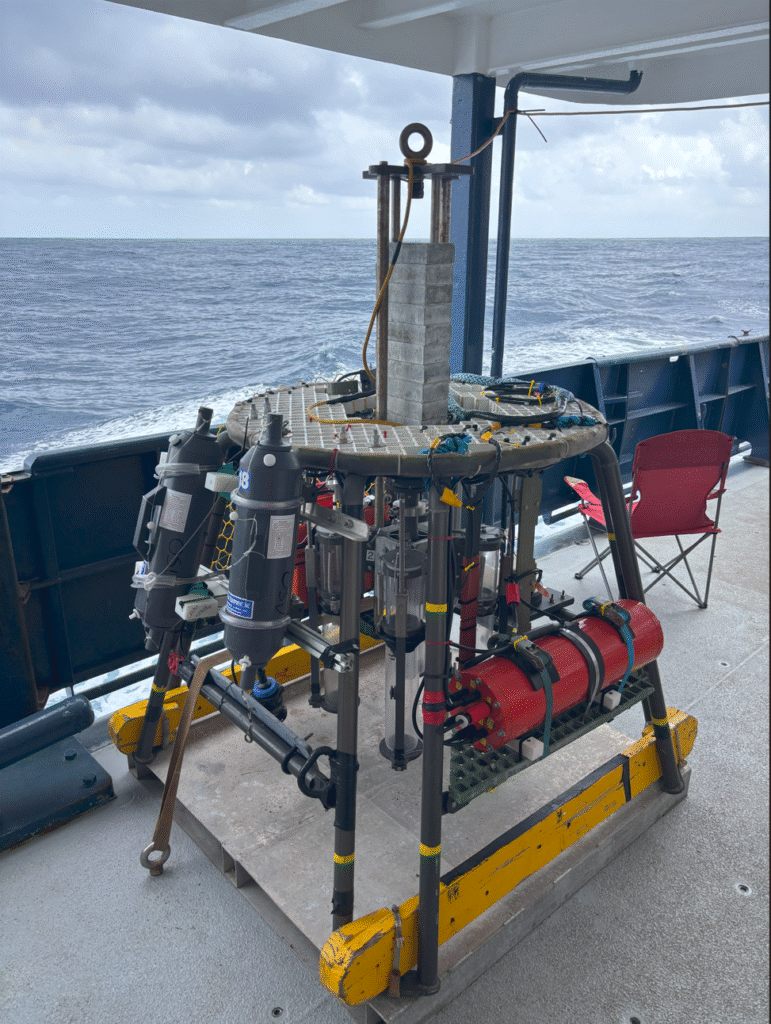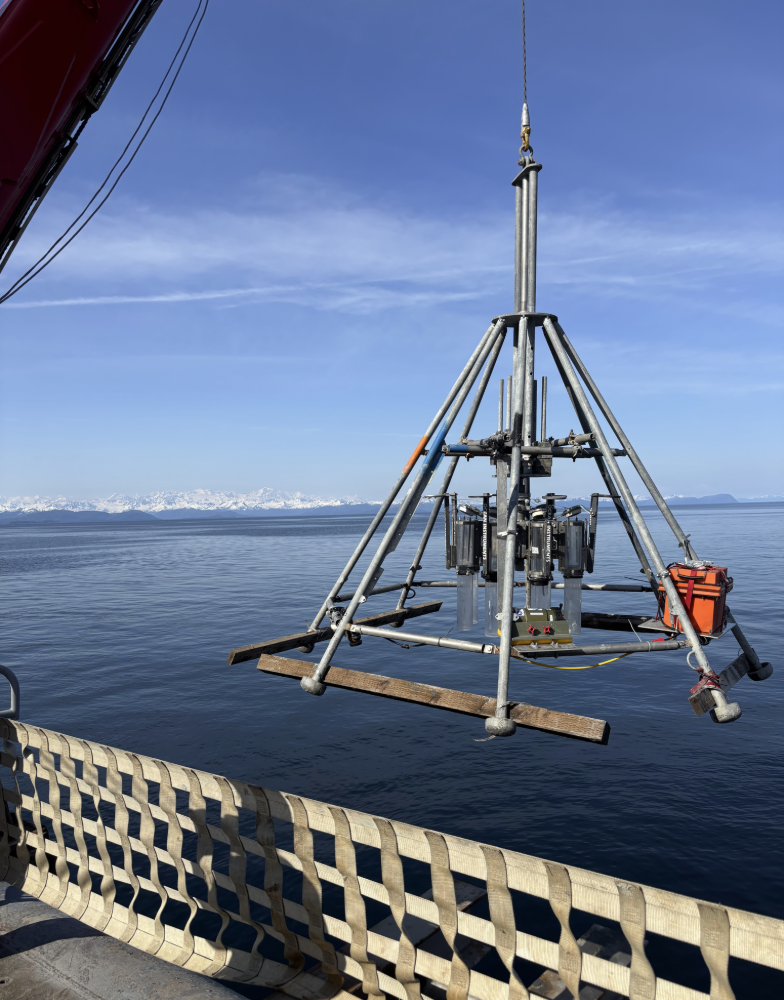| Coring Device | Sample Dimensions |
| MC-800 Multi Core | Up to 8 samples – 9.4 cm diameter, up to 60 cm length |
| MC-400 Multi Core | Up to 4 samples – 9.4 cm diameter, up to 50 cm length |
| Slow Core | 1 sample – 10.16 cm diameter, up to 1 m length |
Multi Corer:
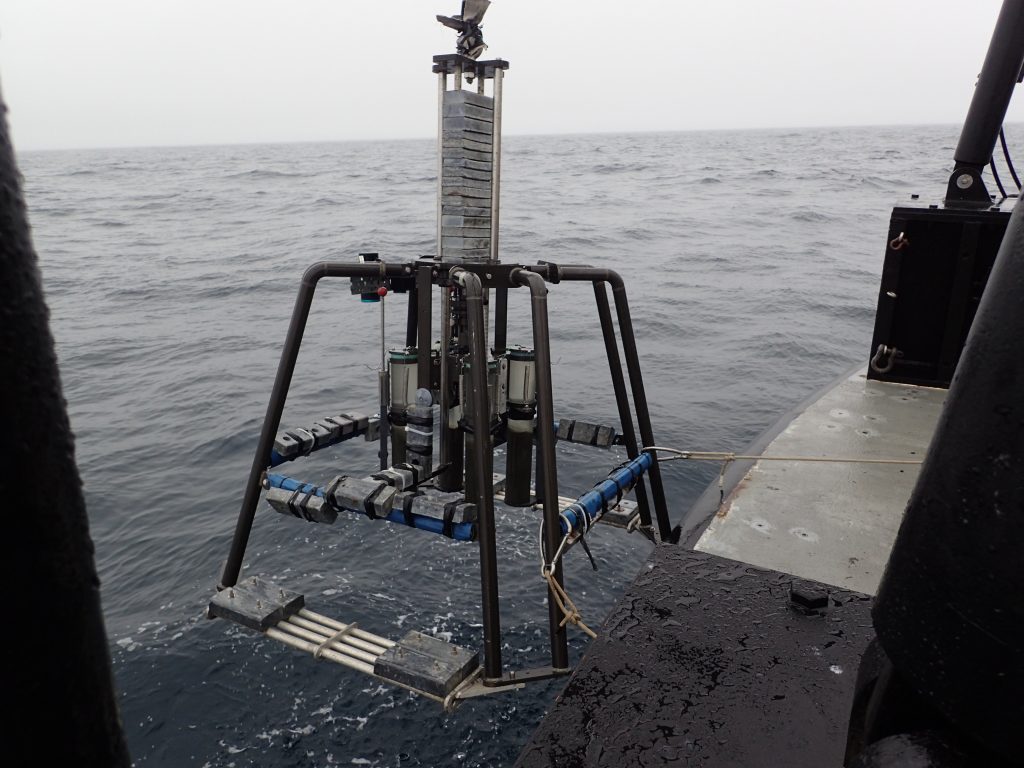
Multi corers consist of a drive carriage that has mounting positions for multiple coring tubes (hence the name). The carriage is supported by a frame that lands on the seabed, and then when the wire slacks the corer slides into the sediment driven by a weight stack. Motion into the sediment is controlled and limited such that the sediment-water interface is preserved in the coring tubes, above a sediment sample of max ~60 cm in length. The corer can be rigged to hold an even number of tubes up to 4 for the MC-400, and up to 8 for the MC-800.
The multi corer provides redundant opportunities for collection of destructive large volume samples from equivalent sediments, as well as for archival of one or more complete undisturbed cores. It is an excellent option for recovering the uppermost sediment column and bottom-water interface in a wide range of lithology, although it doesn’t work well in very sandy sediment. The polycarbonate tubes are ~80 cm in length, and are fully removable for processing and archival. MARSSAM can provide equipment to extrude and subsample at sea upon request, and tubes can also be drilled for Rhizon sampling immediately upon recovery. MARSSAM can also provide racks for hanging samples in their frames for storage or analysis.
MARSSAM has a 10′ multicore van that is often sent on expeditions that will frequently deploy the MC-400 or -800. The van contains spare components, tools and mounts for at sea modifications to the instruments.
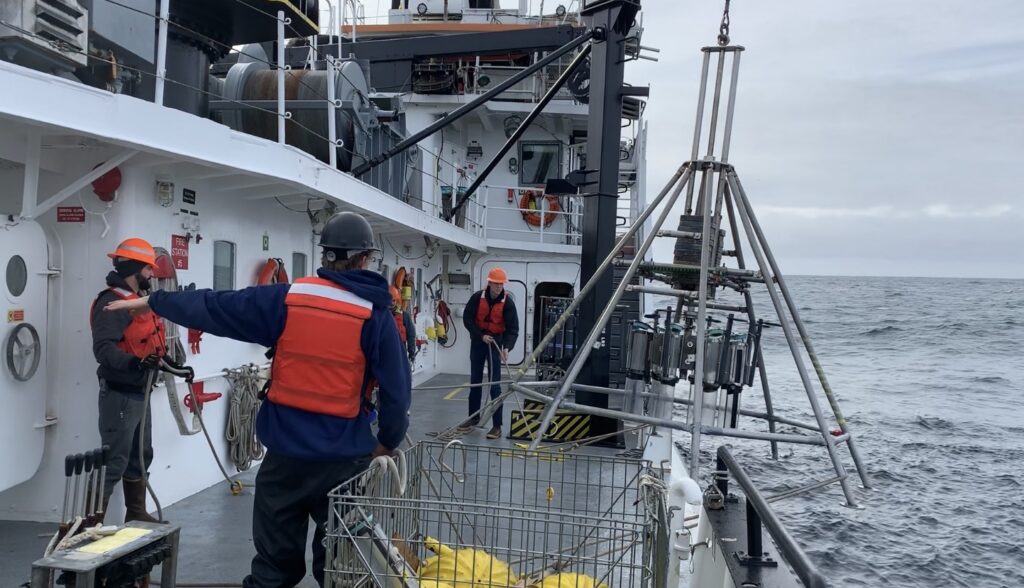
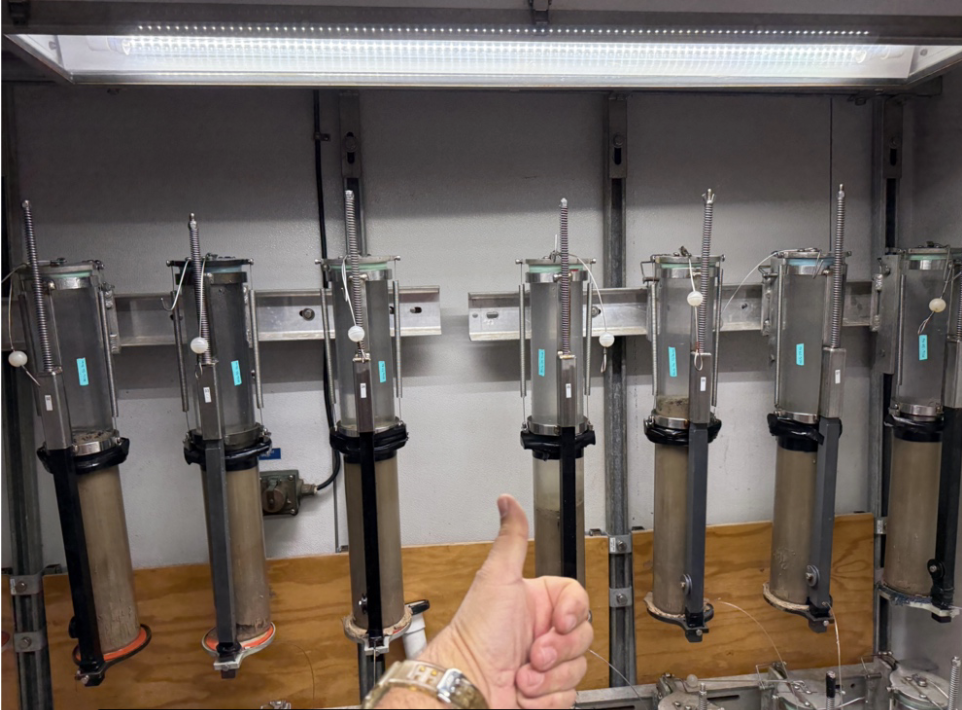
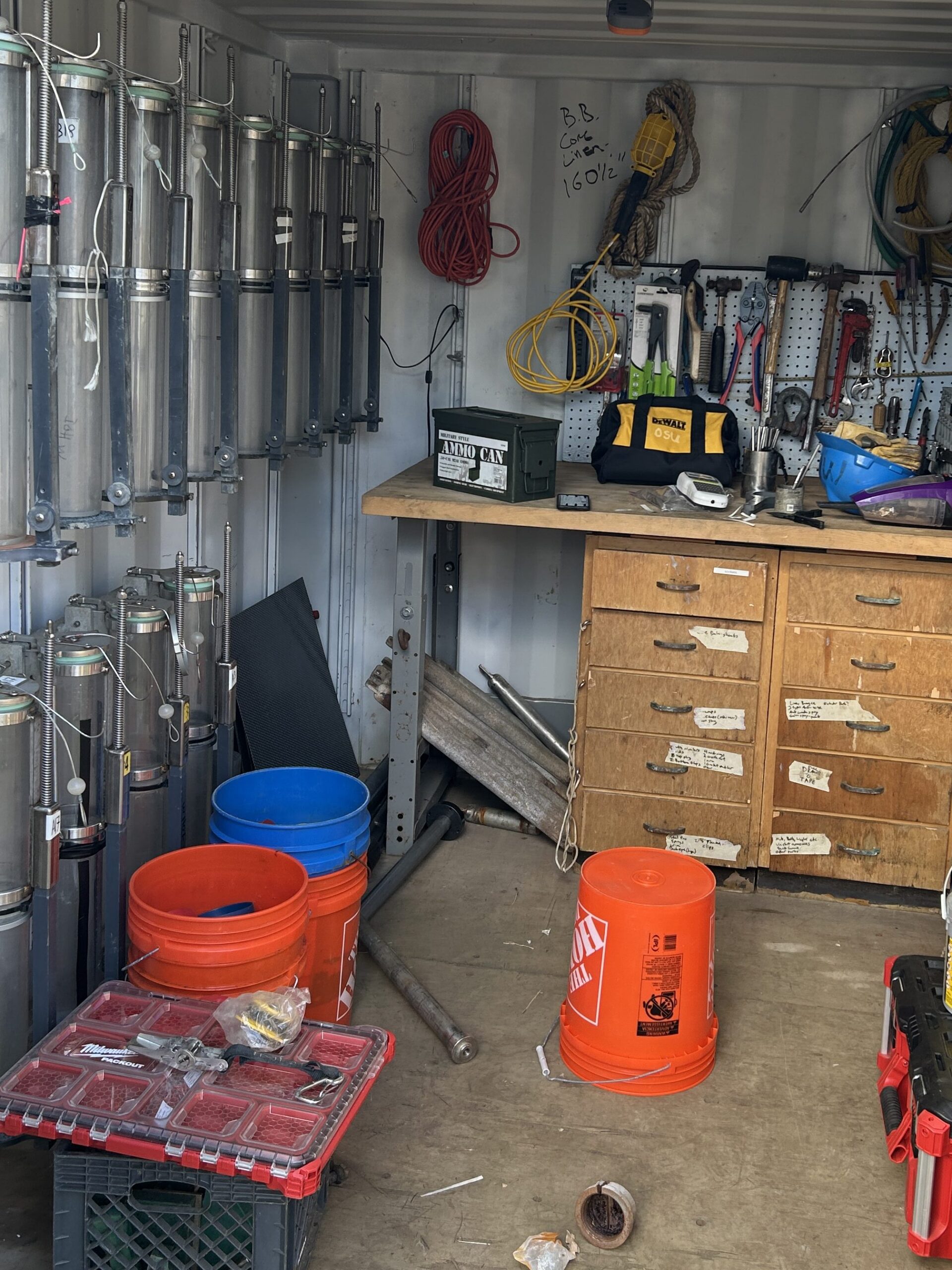
Slow Corer:
The slow corer is somewhat similar in design and function to the multi-corer, although it has only a single (and slightly larger) tube. As the name implies, when the lander reaches the seabed the tube on the corer slides slowly into the sediment driven by a hydraulically dampened weight stack. This coring device is also excellent at collecting the uppermost sediment column and sediment/water interface, with a maximum sample length of ~80 cm. It tends to be more successful at recovering sandier sediments than the MC-400 or MC-800 as it has more force per surface area of tube and a better foot closing mechanism.

MISO Enhanced Multicoring:
MARSSAM frequently partners with Woods Hole’s Multidisciplinary Instrumentation in Support of Oceanography (MISO) group to rig coring equipment with cameras, niskin bottles and more. This can be done with the MC-400 (lower weight and deck footprint) or MC-800. Note that adding equipment also changes deck operation times as well as cabling needs (e.g. live imagery options are not available using 9/16″ steel wiring). Please reach out to us for more information on these options.
